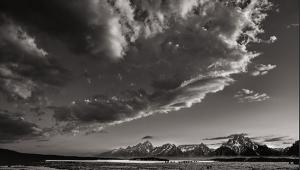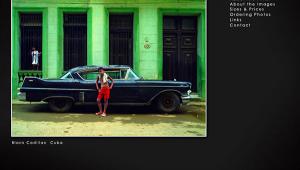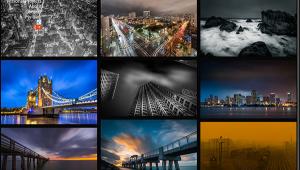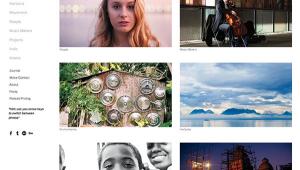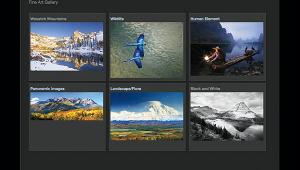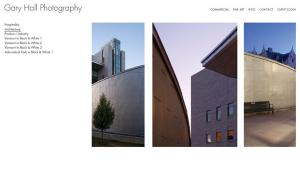Web Wandering
Preserving The Scientific World
Felice Frankel and Chuck Doswell are scientists as well as photographers. However, their interests lie poles apart. While Frankel finds her chosen material in the laboratories at Massachusetts Institute of Technology, Doswell is a storm chaser, in love with the moving clouds and lightning storms over the plains in his native Oklahoma. What unites them is their fascination with the natural beauty before them and a need through their photographs to bring what they witness to our awareness. Their web sites are rich in text and imagery and loaded with information that will keep you linking from one phenomenon to another. Felice Frankel, artist in
residence at Massachusetts Institute of Technolo-gy, would like to turn
the whole world on to science. And, she just might. Communicating information
through images, she is presenting scientific data in a new pictorial
way and bringing attention to the subject as it has not been done before.
What Frankel is doing is documenting research, taking her camera into
the laboratories, and seeking the esthetic components in her subjects
along with their scientific data. |
|||
Her dazzling colors depict the inherent beauty of the natural world, sparking our curiosity to see more, to learn more. Her exhibition, On the Surface of Things, ran as a special interview on PBS and was published as a book (now going into its second printing) with text by Professor George M. Whitesides of Harvard University. On the web site a beautifully configured photograph shows patterns of Proteus (bacteria) colonies, the arresting image bridging the scientific and esthetic properties of the subject. In another, Frankel explores the magnetic force of a drop of Thero Fluid, placing it on a piece of glass under which she put a yellow post-it. Beneath, she used seven circular magnets to create a pattern within the drop. Looking closely at the image you can make out the reflected windowpanes of the available light that Frankel used. Alan Lightman of MIT describes Frankel's work as "a happy union and a deep one. These spellbinding colors, textures, and filigrees," he says, "captured with Frankel's keen eye, remind us that much of our sense of beauty derives from the endless variety of phenomena we find in the natural world. Every image is a scientific question, a wonderment, a poem..." |
|||
Frankel was a landscape and
architectural photographer for 20 years with a degree in biology and an
interest in biochemistry. "Science was always in my heart,"
she says, "and when I received the Loeb Fellowship at Harvard in
1991 and they told me I could do anything I wanted to do, I decided to
use my photography to enlighten people. I was able to take classes with
people like E.O. Wilson and Steven J. Gould and felt that with my photography
I would be able to improve the imagery that scientists were using to communicate
their work. Photography for them had been just a way of quick record keeping
and certainly they had not been interested in communicating to the general
public." |
|||
Should you decide that lightning
is a tempting subject, it is a good idea to keep your risks at a manageable
level. So how do you know? You don't. Doswell recalls with humor
how when traveling through the plains, he noticed that the highways were
bordered by fences and lines of power poles that cluttered up his foreground.
To solve the problem he would go up to the fence line and stick his tripod
through the fence. One day at the height of a lightning storm, he got
to thinking that the storm was beginning to put down lightning bolts near
those power poles and the fence line, and if it hit them it would run
right down and get him. |




